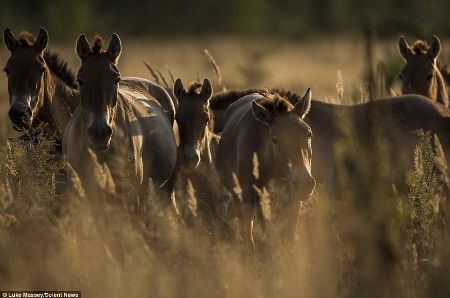by Larry
May, 2017Chernobyl RevisitedOn April 26, 1986, Europe was rocked by an explosion at Chernobyl in the Ukraine. A nuclear power plant had a partial meltdown, its containment infrastructure was breached, extremely radioactive smoke and water vapor clouds were spreading out across several countries, and efforts to halt the damage were at first only partially successful. It was a frightening time. Many people died from the immediate accident, subsequent measures by emergency workers, and dispersing radiation through the adjacent region in the weeks following. Over three decades later, the area remains quite hazardous. The fallout that spread out over Russia and a large swath of Europe may have contributed to cancer deaths. Very conservatively, an estimated 4000 have died from the tragedy. Estimates of the total number of excess deaths in Europe as a result of increased cancer risk from Chernobyl's radioactive fallout exceed 200,000, but there is no way to prove such a large number. Soon after the catastrophe, about 50,000 people were forced to leave villages close to Chernobyl and to try to start afresh elsewhere. The resettlement figure would eventually reach about 350,000. The Chernobyl accident is thought to have led in general to a major reconsideration of the efficacy of nuclear power, for instance in Germany, where, instead, the emphasis since has been more on solar energy solutions to increasing energy needs. The Chernobyl Exclusion Zone (CEZ), a 600,000-acre area around the wrecked plant, has not been reopened for our habitation. There are people who live near there and others who venture in briefly. For the most part, it has been left untouched by humans for about 31 years.
So, apparently, are wolves, European bison, bear, moose, foxes, bees and other insects, hares, rats, beaver, salmon and other fish, wading birds, turkeys, egrets, hawks, quite a variety of other fowl, and deer. In merely days at a time of hanging out in the CEZ, Massey and others have also recorded the presence of wolves, lynx, spiders, wild boar, badgers, voles, shrews, elk, and mice. Will this accidental nature preserve be sustained once humans can safely migrate back into the area? Who can say? For now, in spite of high radiation levels, the Chernobyl Exclusion Zone remains a vast, great experiment and a sanctuary for wildlife that might not have been able to do nearly so well with us around. It is interesting to speculate on various places that in the course of human development may become new exclusion zones and how nature will transform and be transformed by them. The prospect of eventual biological or nuclear wars, of terrorism on a grand scale, or of accidents of unprecedented scope seems daunting yet hardly far-fetched. Since Chernobyl, there is already the smaller, still intensely deadly area in Japan where about five years ago a tsunami caused a nuclear catastrophe at Fukushima Daiichi plant. Readings this year showed that radiation levels there remain shockingly high. Thirty years hence, how might area land and marine life in that vicinity have been altered as well, if people continue to be kept away? Ultimately, even if our species by some cataclysm should render most or all complex life in the biosphere unsustainable, it seems likely that, at least from the multitude of anaerobic, single cell forms that subsist at the bottom of the oceans or in caves and caverns deep below Earth's surface, new evolutionary lines will arise. Eventually, a future form of intelligence may gain hegemony upon our pearly world. What might it make of the thin line of pressed plasticized debris that could mark our relatively brief reign within the geological record? Primary sources: Animals Rule Chernobyl Three Decades After Nuclear Disaster. John Wendle in NationalGeographic.com; April 18, 2016; Roaming Wild In The Radiation Zone: Endangered Species Are THRIVING Around Chernobyl 30 Years After Nuclear Disaster Forced Mankind To Leave. Chris Pleasance in DailyMail.co.uk; March 28, 2017. |
 Yet the few who trek in for short stays now witness an odd and perhaps inspiring thing: left alone by people, the plants and wildlife of the CEZ have thrived, in spite of enough radiation to kill off many of the young animals and shorten the lives of many more. One striking example is the wild Przewalski horses, nearly extinct, but introduced into the CEZ in the hope they might make a comeback. Indeed they have. Luke Massey, who gained permission for a few days in the CEZ, has taken striking photos from the area that confirm the equines, now a complete herd, are flourishing.
Yet the few who trek in for short stays now witness an odd and perhaps inspiring thing: left alone by people, the plants and wildlife of the CEZ have thrived, in spite of enough radiation to kill off many of the young animals and shorten the lives of many more. One striking example is the wild Przewalski horses, nearly extinct, but introduced into the CEZ in the hope they might make a comeback. Indeed they have. Luke Massey, who gained permission for a few days in the CEZ, has taken striking photos from the area that confirm the equines, now a complete herd, are flourishing.